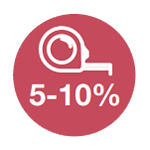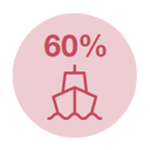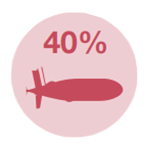WP5 Future sensor systems
Key Findings
KF5.1
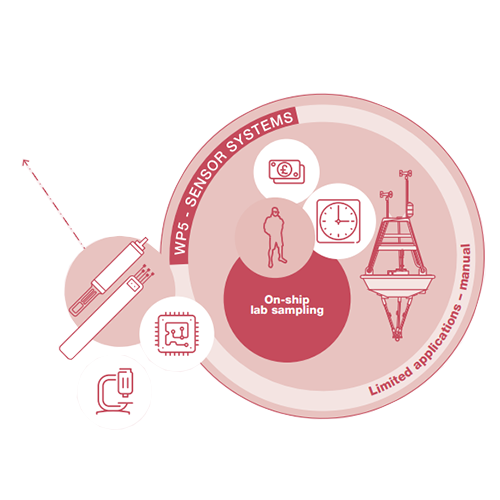
The current rate of measurement technology development, though excellent in the UK and in pockets globally, is slow relative to the ambition of the oceanographic community, with only 5% of the requirement addressed by new measurement technologies in the last 10 years. Without intervention or drivers from emissions reductions, this trend is likely to continue with an additional 5–10% of the measurement requirement addressed by 2035.
KF5.2
The scoping review has identified a list of 68 categories of user requirements. Research vessels currently address 60% of the total requirements for oceanographic research whereas MAS platforms could at best address 40%. There are 61 specific technology developments that could address this gap (with an estimated cost of over £100 million).
KF5.3
There remain a small number (10 out of 68) where there is not a clear or cost-effective pathway to meeting user requirements without a research vessel. The WP5 report identifies possible solutions which might be described as stretch targets.
KF5.4
Adaptation and “marinization” of innovations made elsewhere has been a successful strategy and numerous projects are ongoing of this character. Examples include: AI and ML for image processing, classification and/or taxonomy; application of molecular assays such as PCR and genome sequencing.
KF5.5
The gaps between requirement and novel, non-ship dependent sensors are currently significant and will require an increase in investment to upscale research and development, including new analytical scientists, engineers, technicians and additional capacity, e.g. laboratories. Whilst dauting, the majority of the requirements are soluble with technology that is known or envisaged within the NZOC timeframe. The UK is currently a world leader in measurement systems and success in this area would ensure that position is retained.
KF5.6
The increasing trend to mass automation will require sensor development independent of platform type (green research vessel, MASS, MAS). Those sensors should be deployable across all platform types to safeguard future options and maintain flexibility across observing systems.
KF5.7
Currently, sensors not linked directly to research vessels or vessels of opportunity are providing data sets to end users that are different to those previously provided by ship-based research. These data are currently used together ith results from ship-based measurements to ensure accuracy, but now provide more data than ships do. For example, programmes such as Argo provide persistent and global synoptic measurements, and AUVs can explore under ice-shelves: neither possible with ship-based measurements. These add to our understanding of the ocean but have not yet replaced the extensive and adaptable measurement, sampling and experimental capabilities of ship-based methods (e.g. for biological sampling and experimental determination of rates) nor have they as yet been designed to do so.
KF5.8
Modern, multi-role research vessels are extremely adaptable and provide platforms (literally and metaphorically) for scientists across all disciplines to work collaboratively, leading to cross-working and productive serendipity. The replacement of these beneficial characteristics with non-ship capability requires a similar level of planning and focus. With appropriate technology it could allow a vastly increased science party to ‘join’ the research expedition at specific points and collaborate with colleagues from across the world. As MAS platform endurance increases, expeditions could feasibly last months with virtual science parties overlapping.
KF5.9
The user community is justifiably concerned that any transition may impact the quality of data they are able to obtain. Key concerns include inability to collect key variables, interruption or suspension of long-term series and time wasted in comparing old with new data sets. A cautionary approach requires a high level of new sensor maturity, its easy availability and its use being well understood. This requires novel sensors, samplers and other autonomous measurement systems to be developed and tested alongside current systems/processes and then commercialised in a cost-effective manner. A significant programme of side-by-side development and trials, both with fully engaging users, will be required to enable this.
Key Recommendations
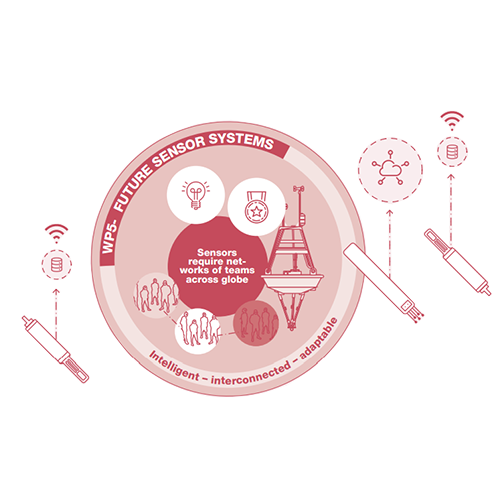
KR5.1
A major, long-term Oceanographic Measurement Systems Development Programme should be established with a research hub and spoke model. A single coordinating hub is essential and should be a centre of excellence in measurement systems. It’s coordinating role should be to support external (spoke) organisations, and satellite hubs (for example focusing on a particular technology, such as acoustics, or animal tagging) by providing support from existing technological solutions (e.g. robust electronics, sensor components, data and software systems) to reduce development effort and accelerate delivery. It should also assist in the interface between users, their requirements, and the specifications of the solutions developed. The hubs (coordinating and satellite) should also promote and develop the use of modularity, common interfaces and best practice in design, metrology and data system. Spokes should support innovation and be aimed at capability gaps. The development programme would work on sensor development for both MAS platform and green or lean-crewed research vessel options. Opportunities to collaborate with international partners should be actively sought to avoid duplication
KR5.2
An expert panel should be set up to refine, within 6 months, the statement of measurement and sampling requirements drafted in this report, which the development program will address and meet. Alignment with international standards should be maintained as a live document and reviewed regularly.
KR5.3
An expert panel should be set up to report within 6 months on standardised design parameters, modules, and interfaces which would guide sensor developers in the hubs and spokes, enable efficiency and as far as possible a ‘plug and play’ approach to platform integration.
KR5.4
An executive for the coordinating hub or expert panel should be convened to, within 6 months, refine the technology development roadmap based on currently understood requirements and to establish mechanisms to adapt this for changes in requirements and research / technology opportunities.
KR5.5
That a working group is established to manage the effect of new measurement systems on platform design: both MAS and green ships. Many of the measurements required could be delivered with MAS but would need platform (vehicle) characteristics that are different to current capability. Equally, green ship requirements may be eased by new measurement systems developed for autonomy. Strong consideration should be given to working across research councils and other funders on the sensor development necessary to support the increased use of autonomy in the marine sector and use of the current developments that support other sectors.
KR5.6
‘Sideways’ development of sensors - collaboration with industry on sensor R&D, overseen by InnovateUK, should be prioritised.
